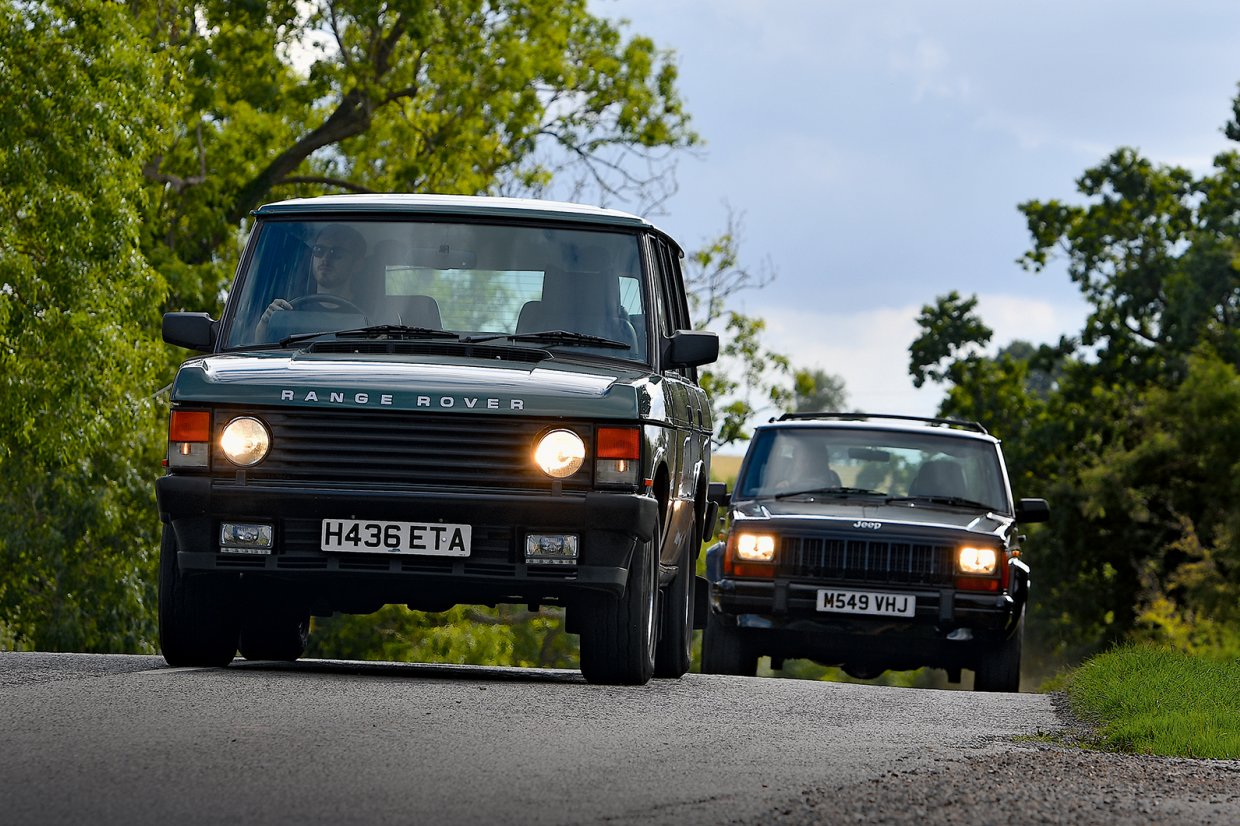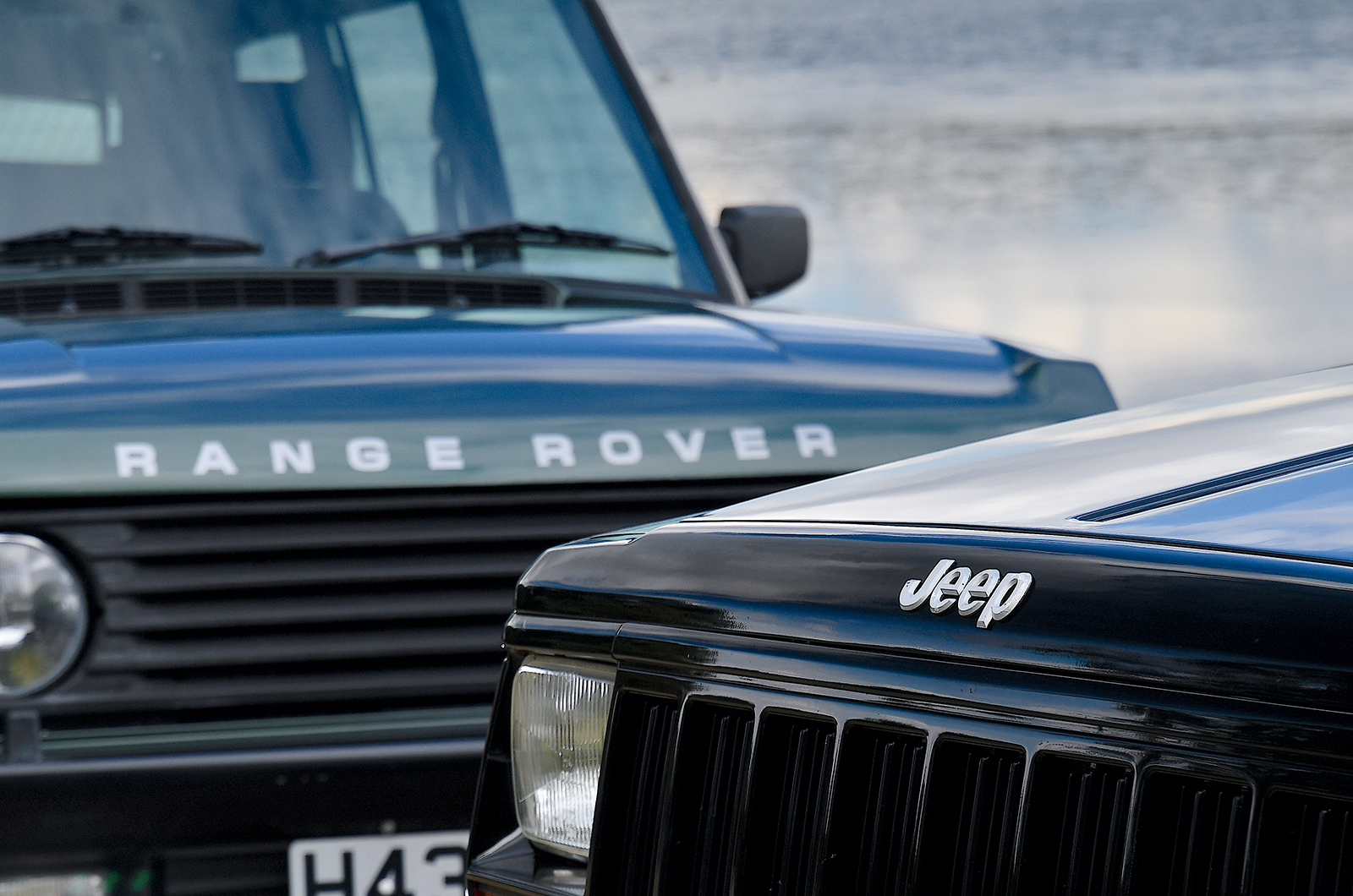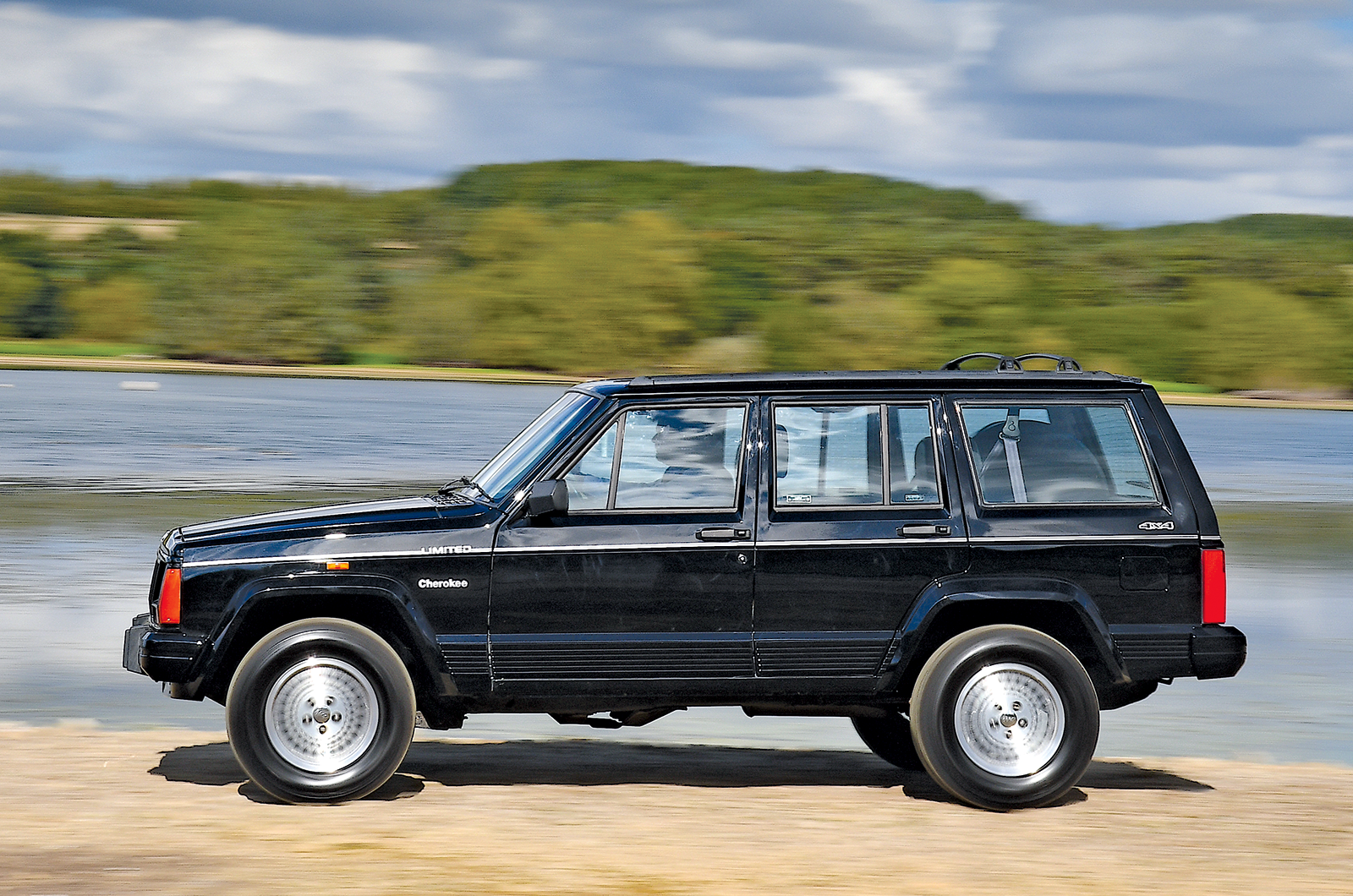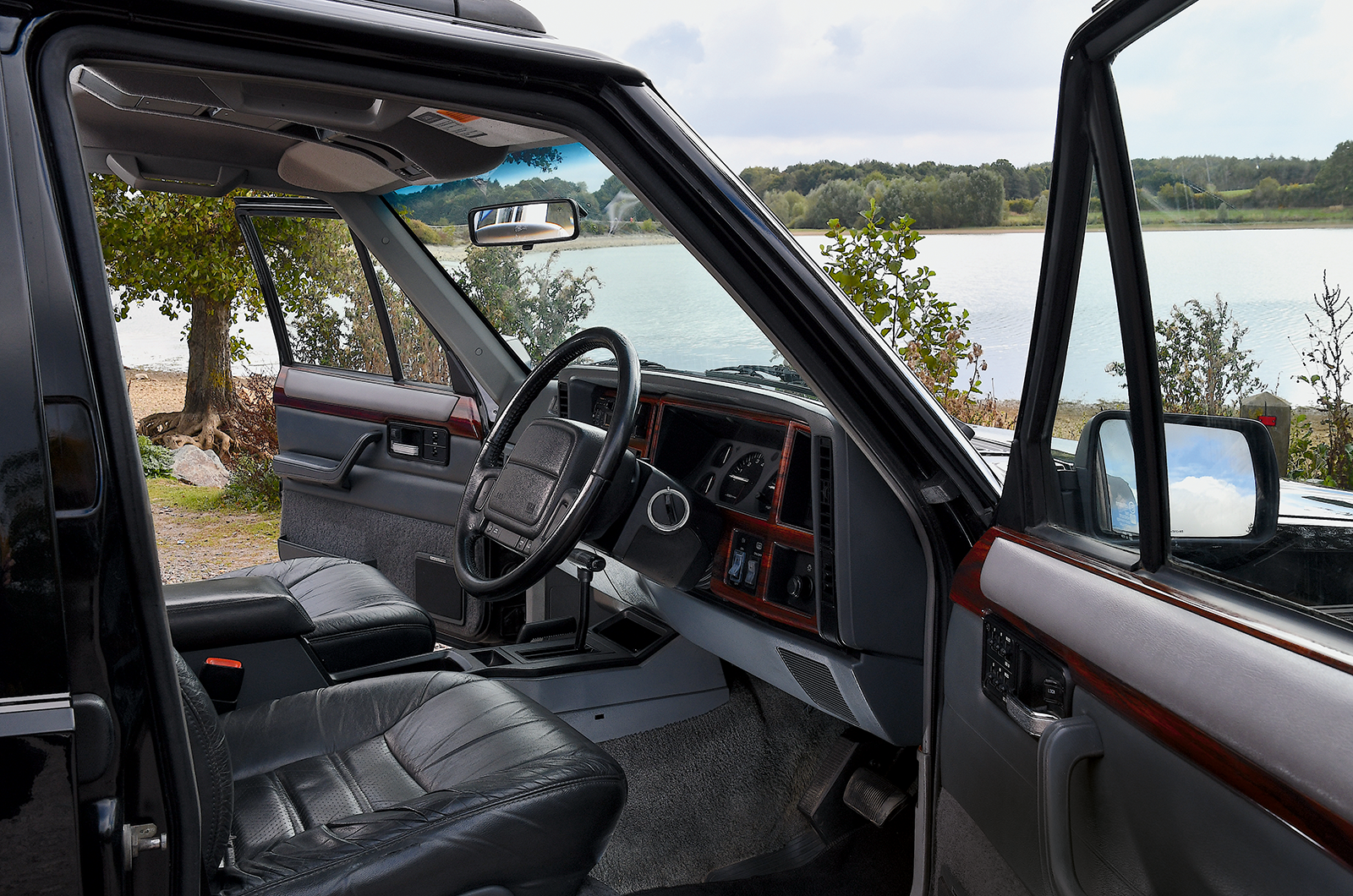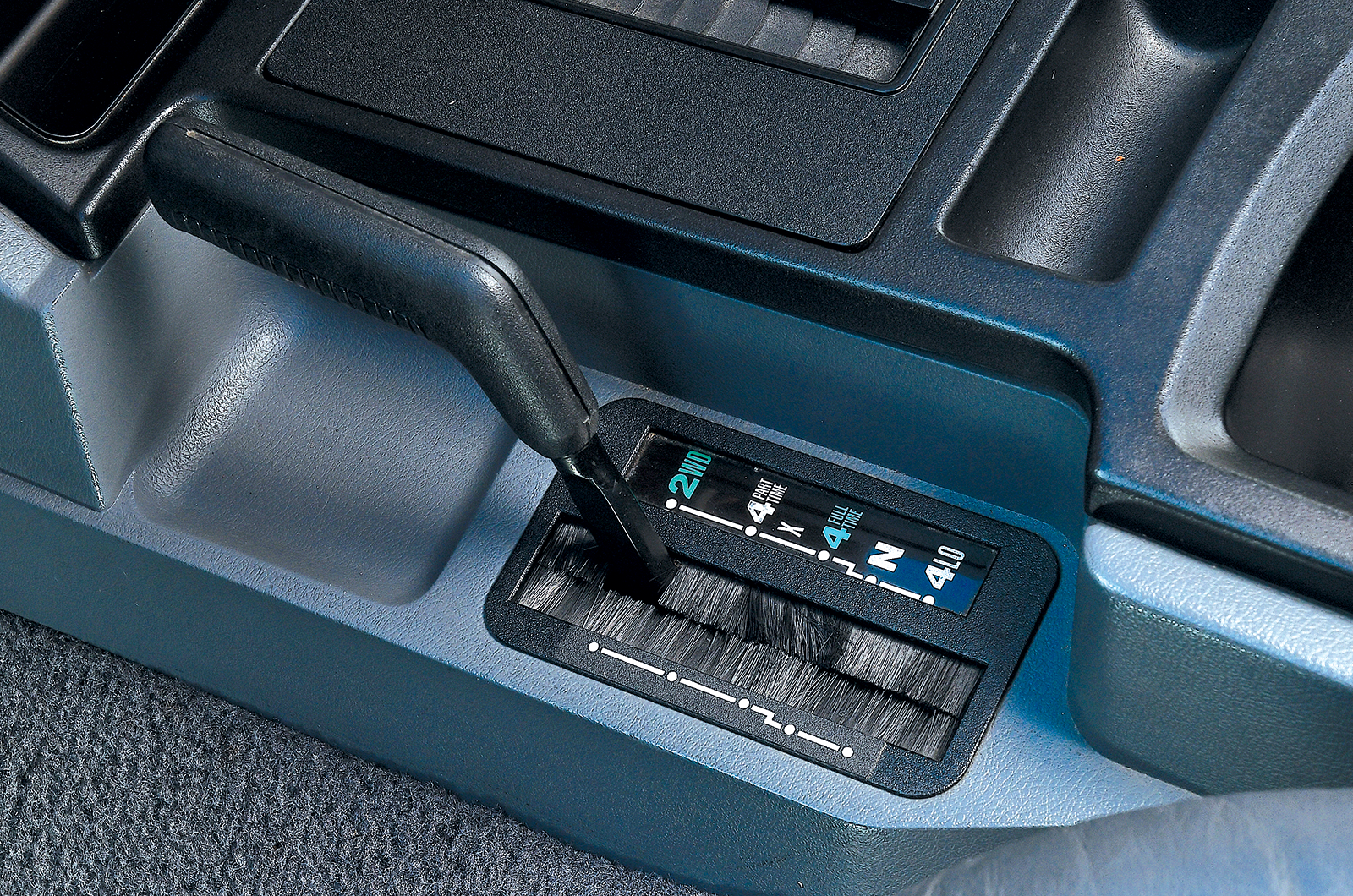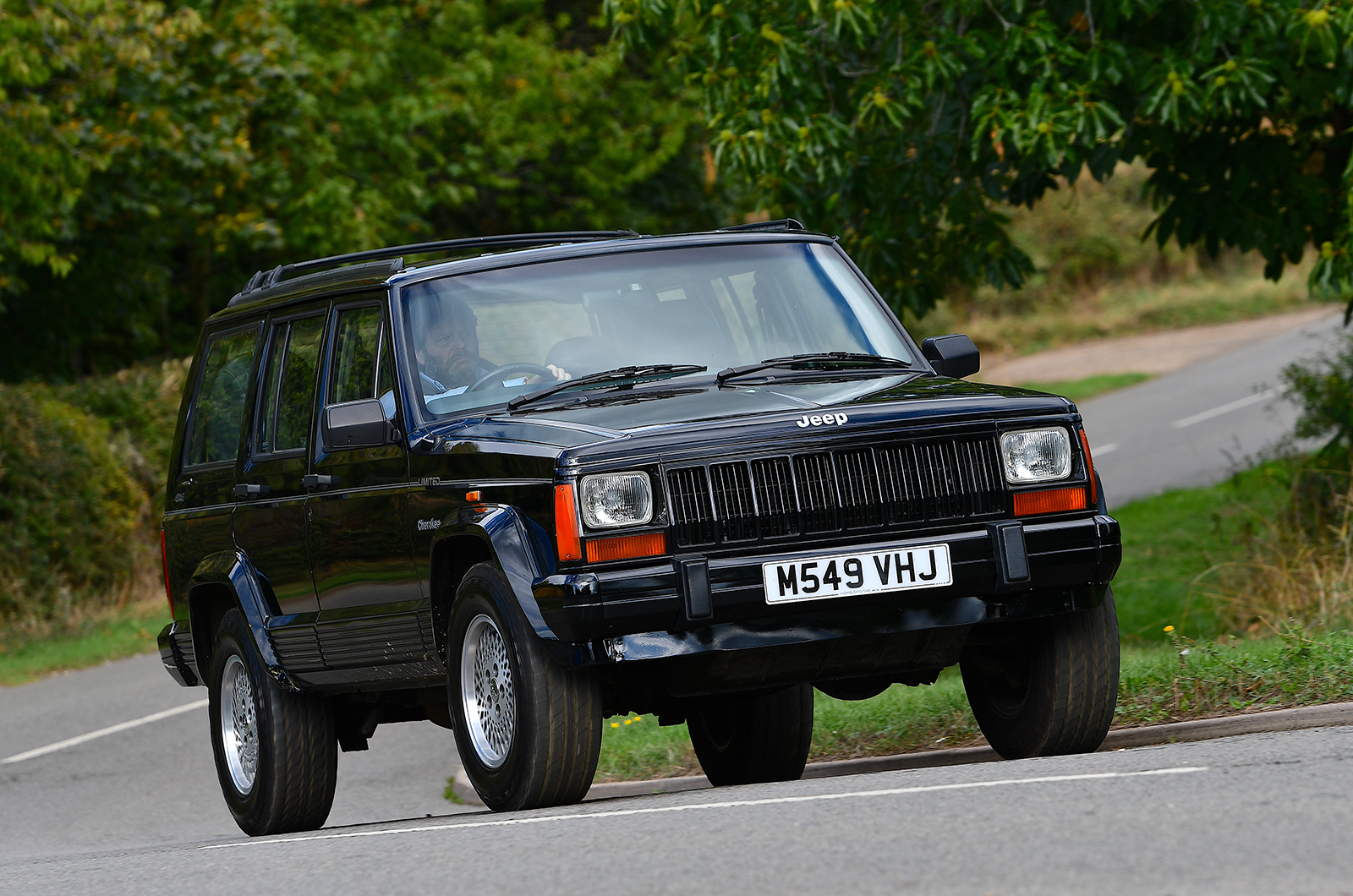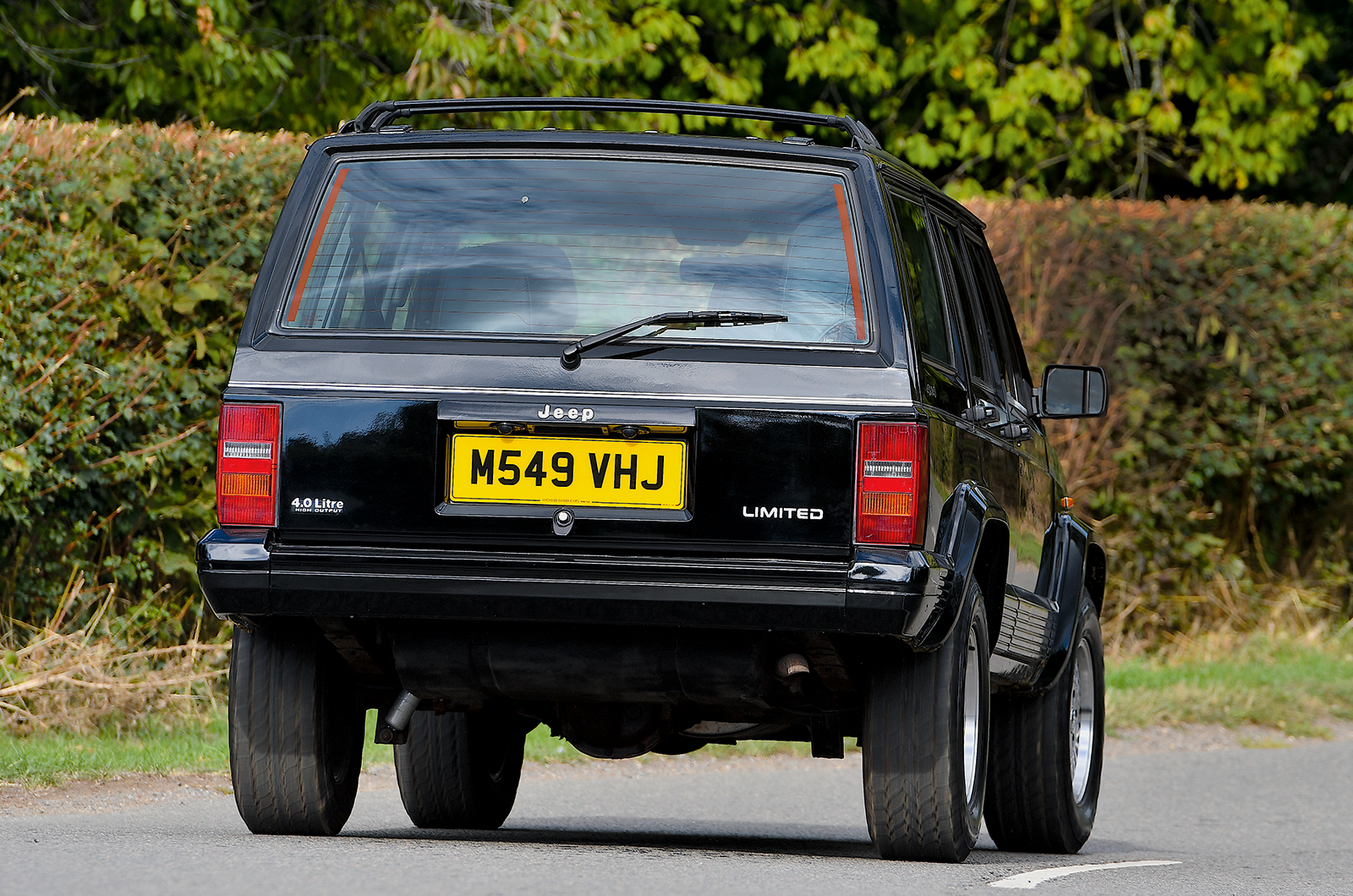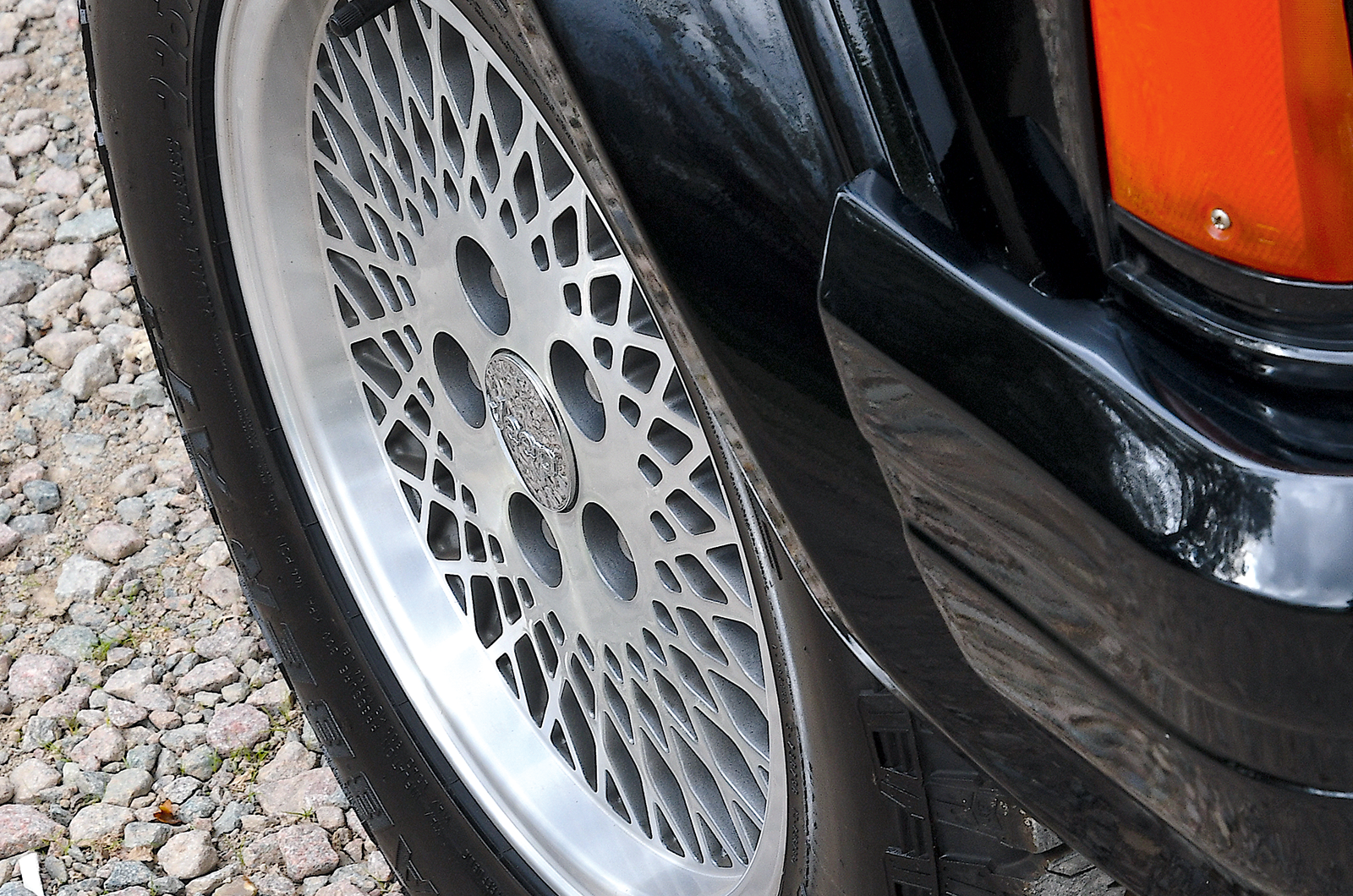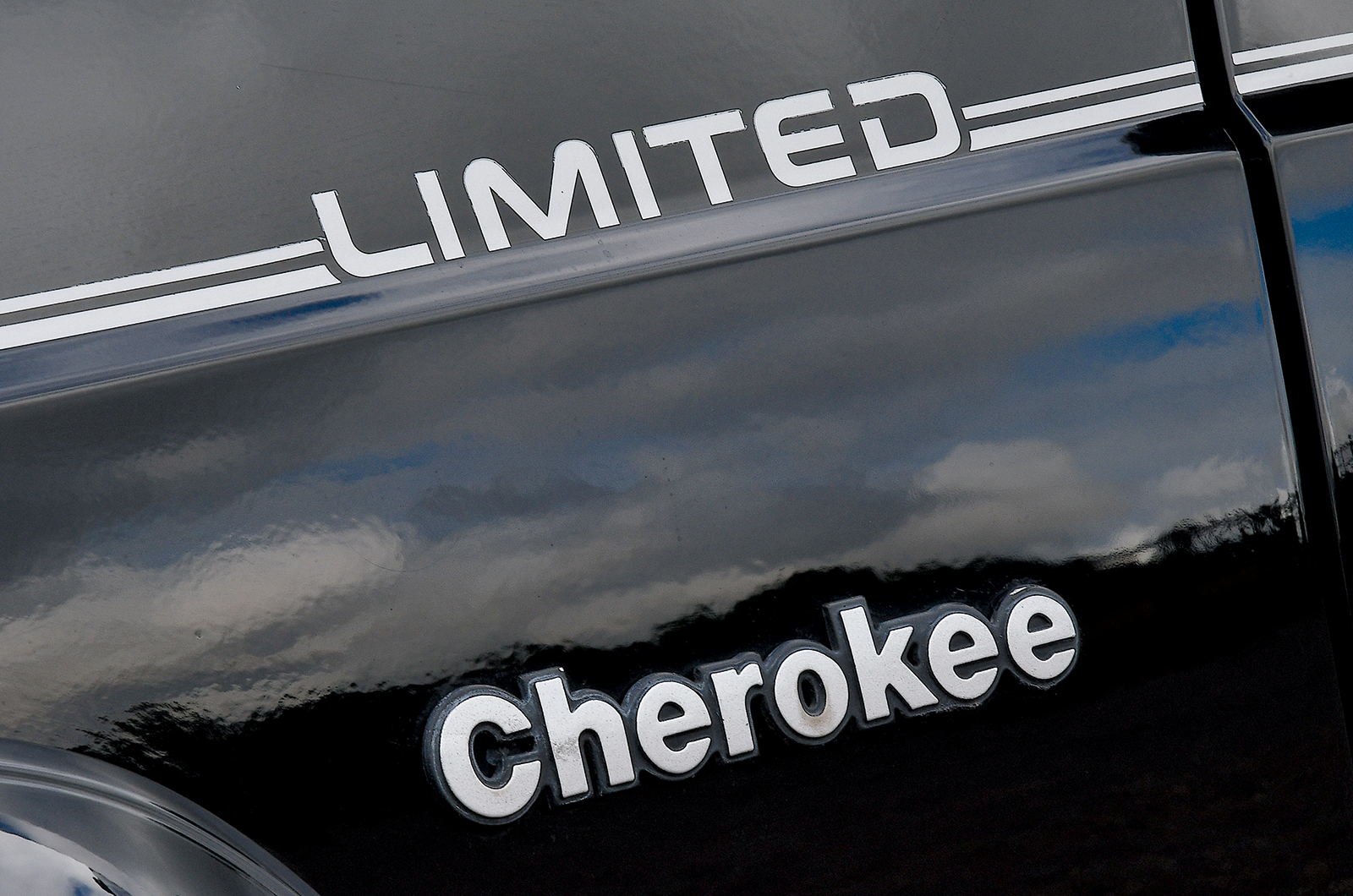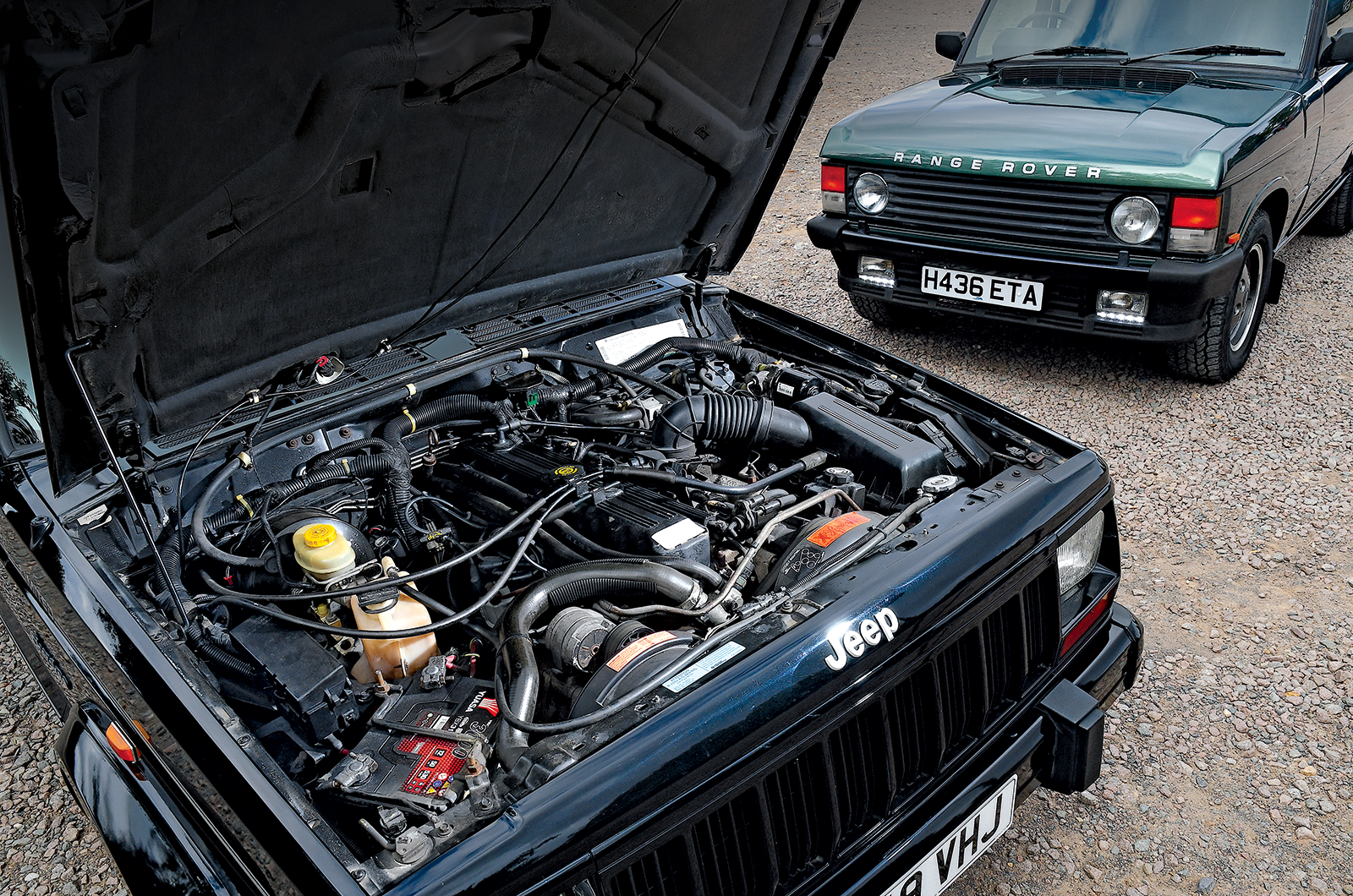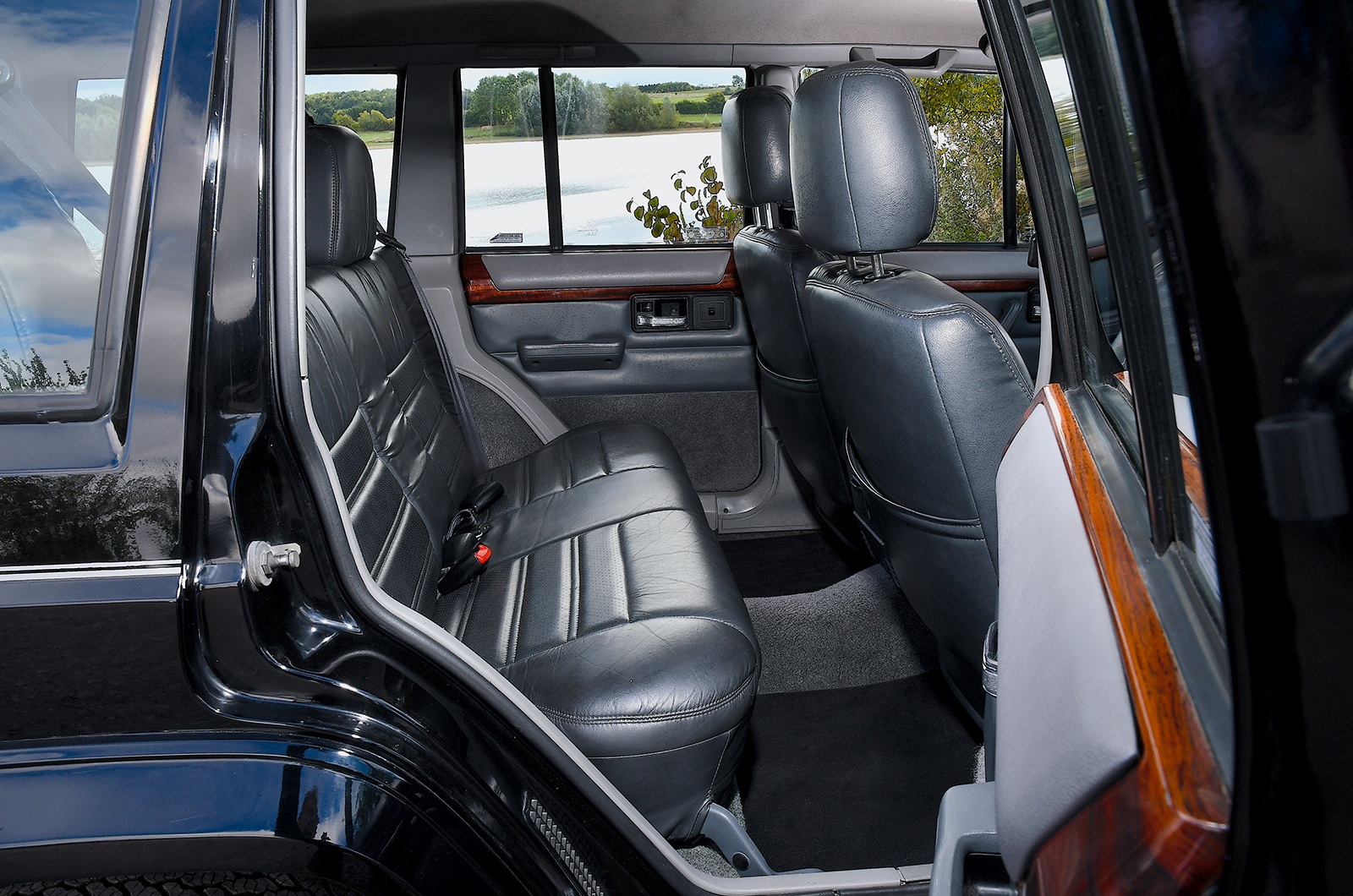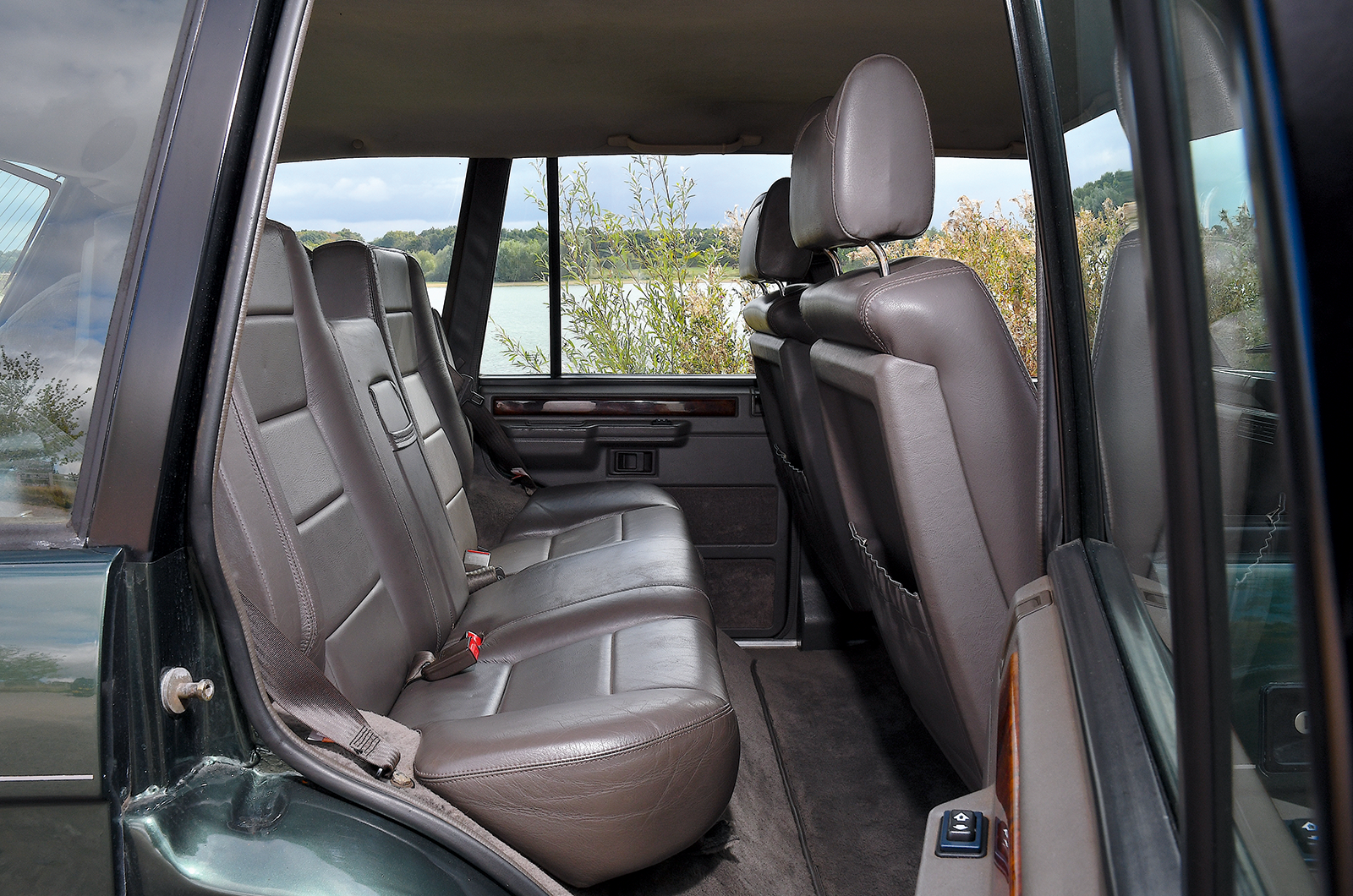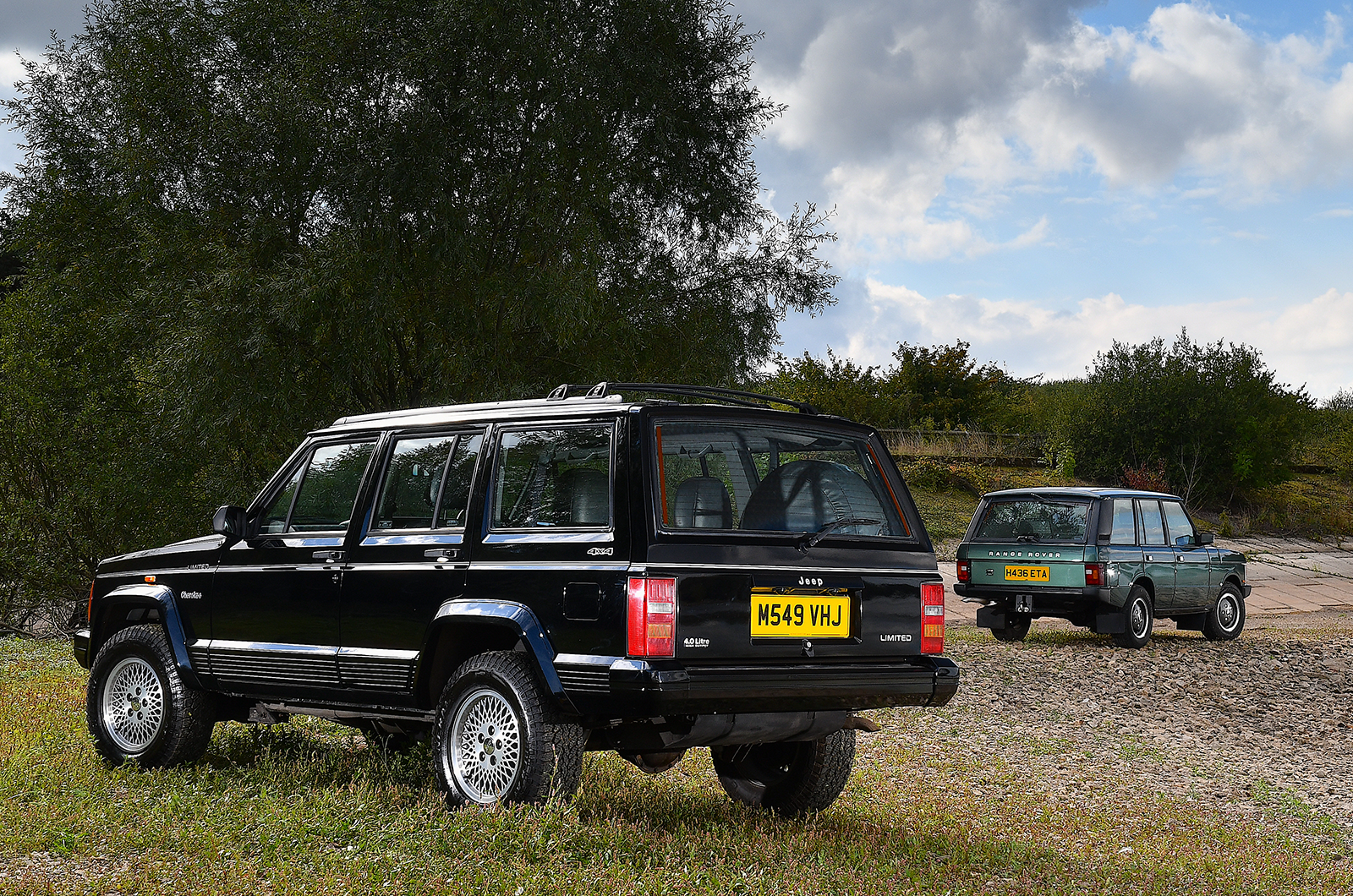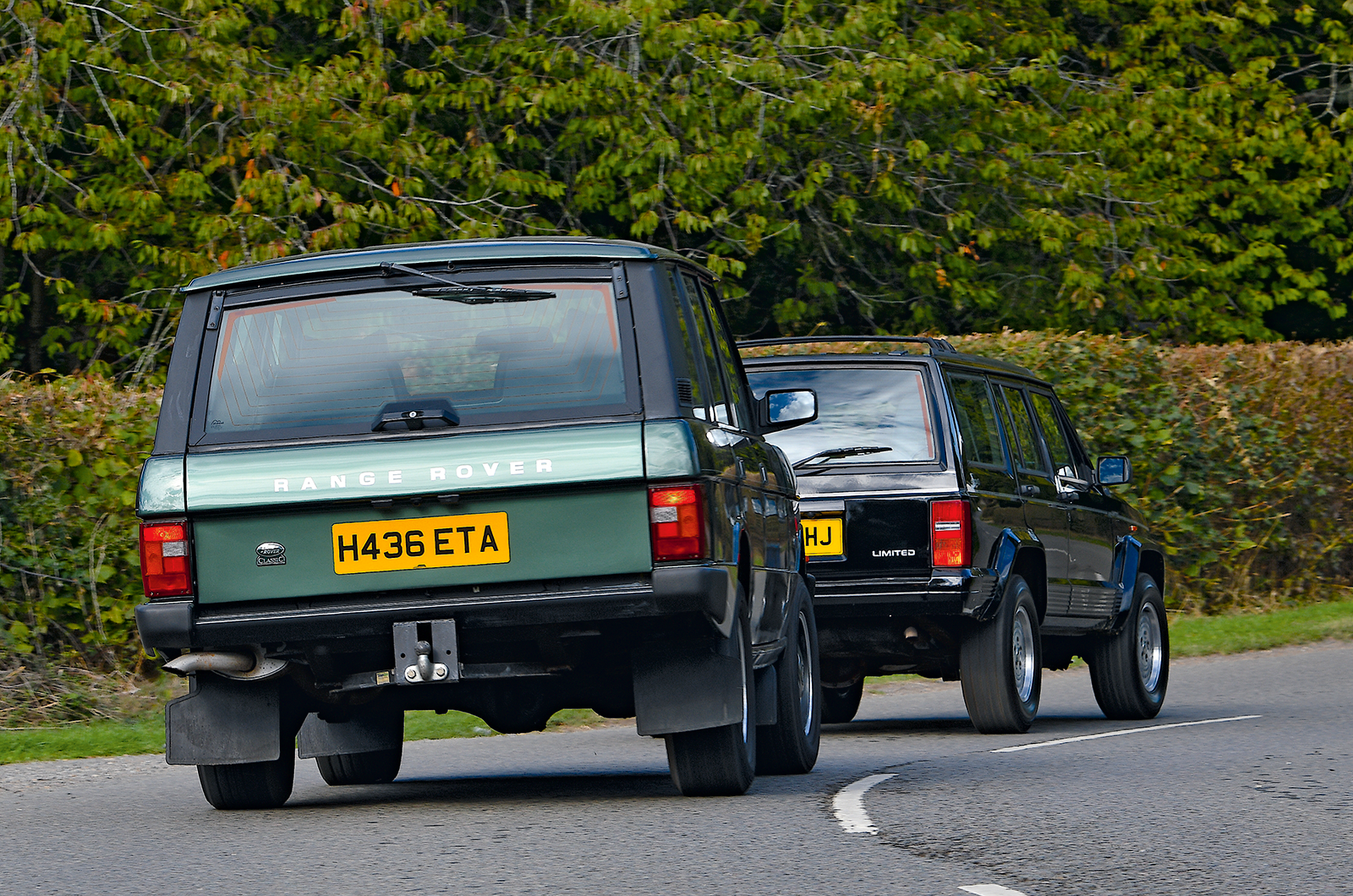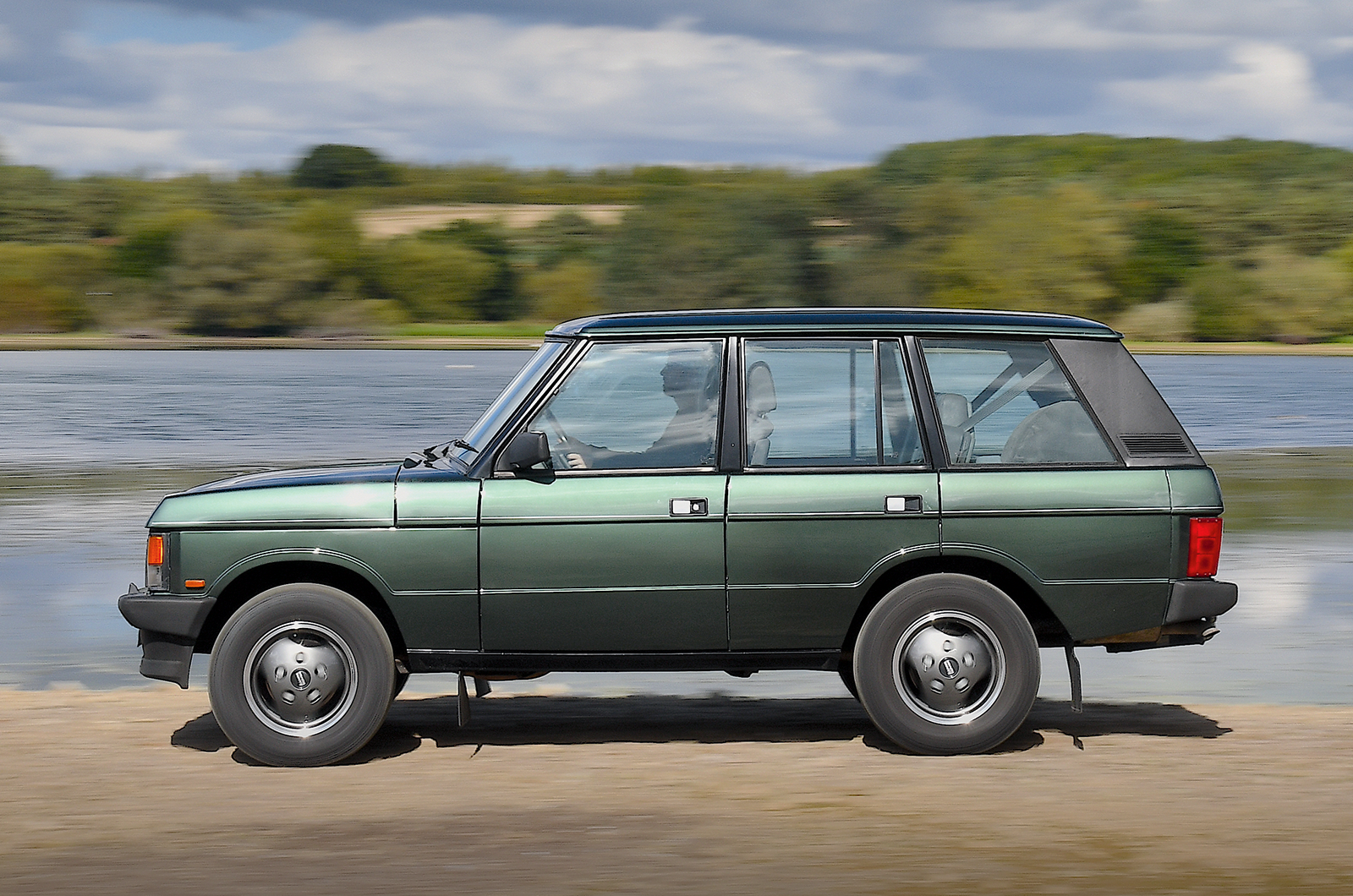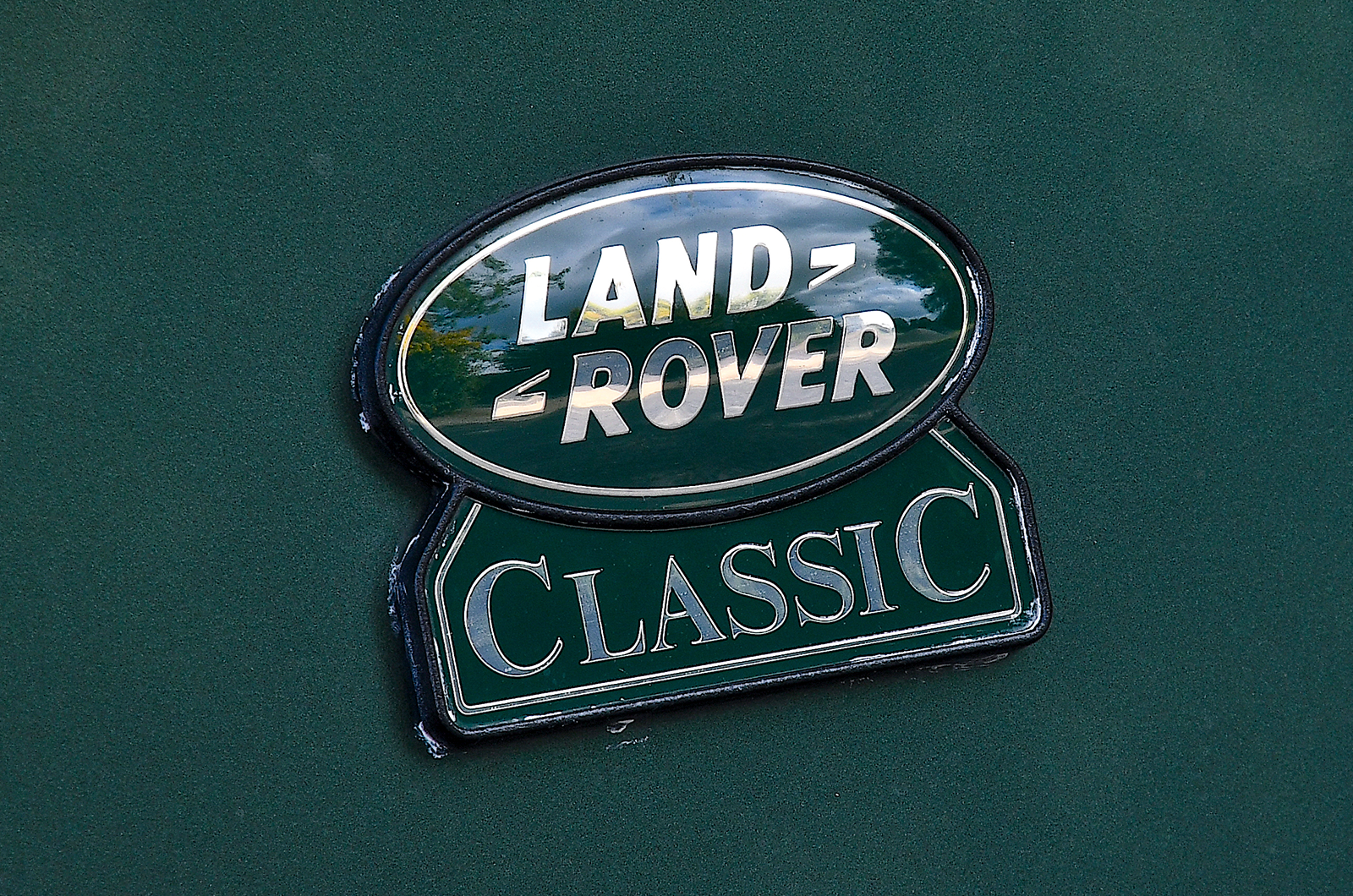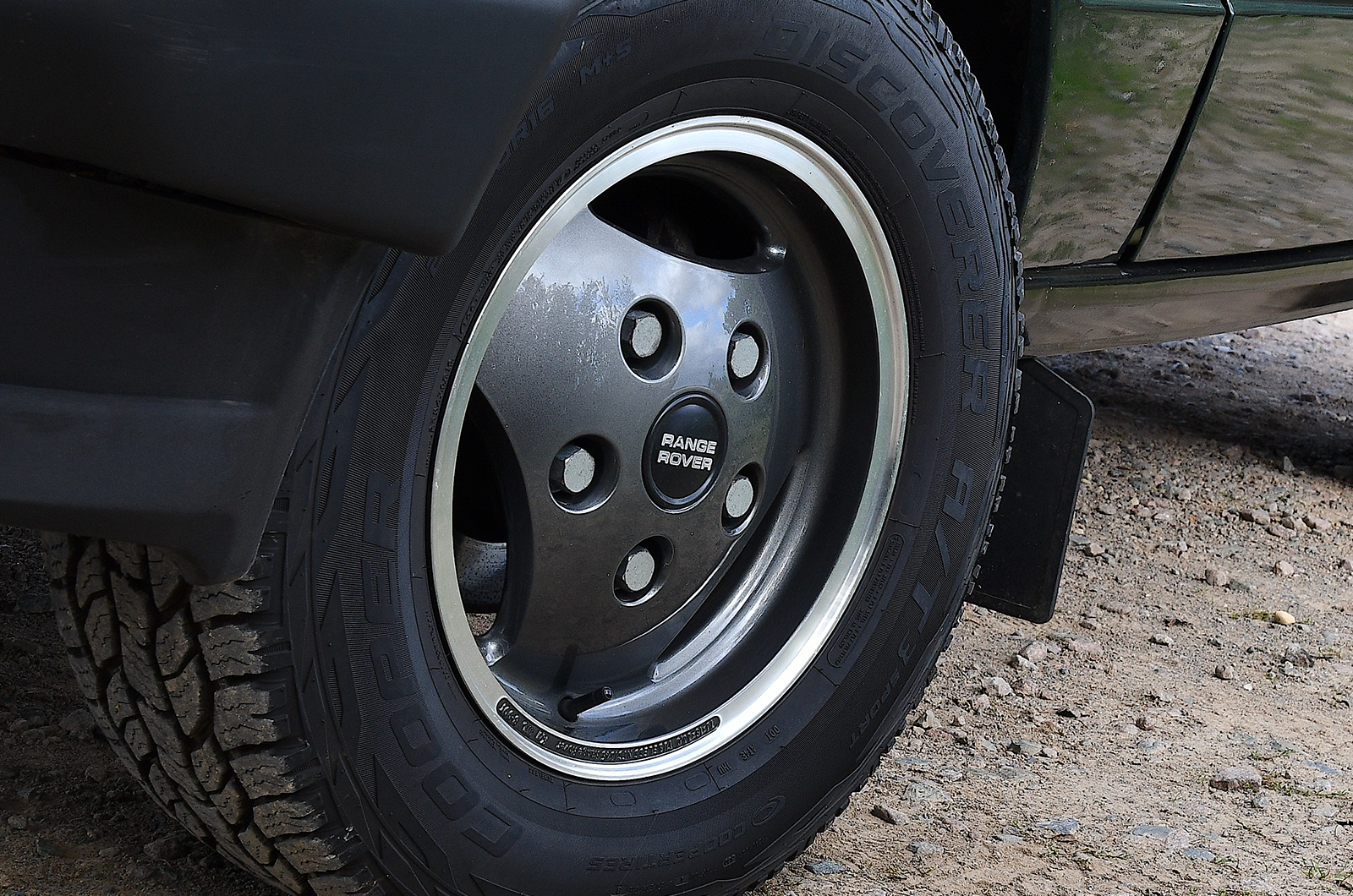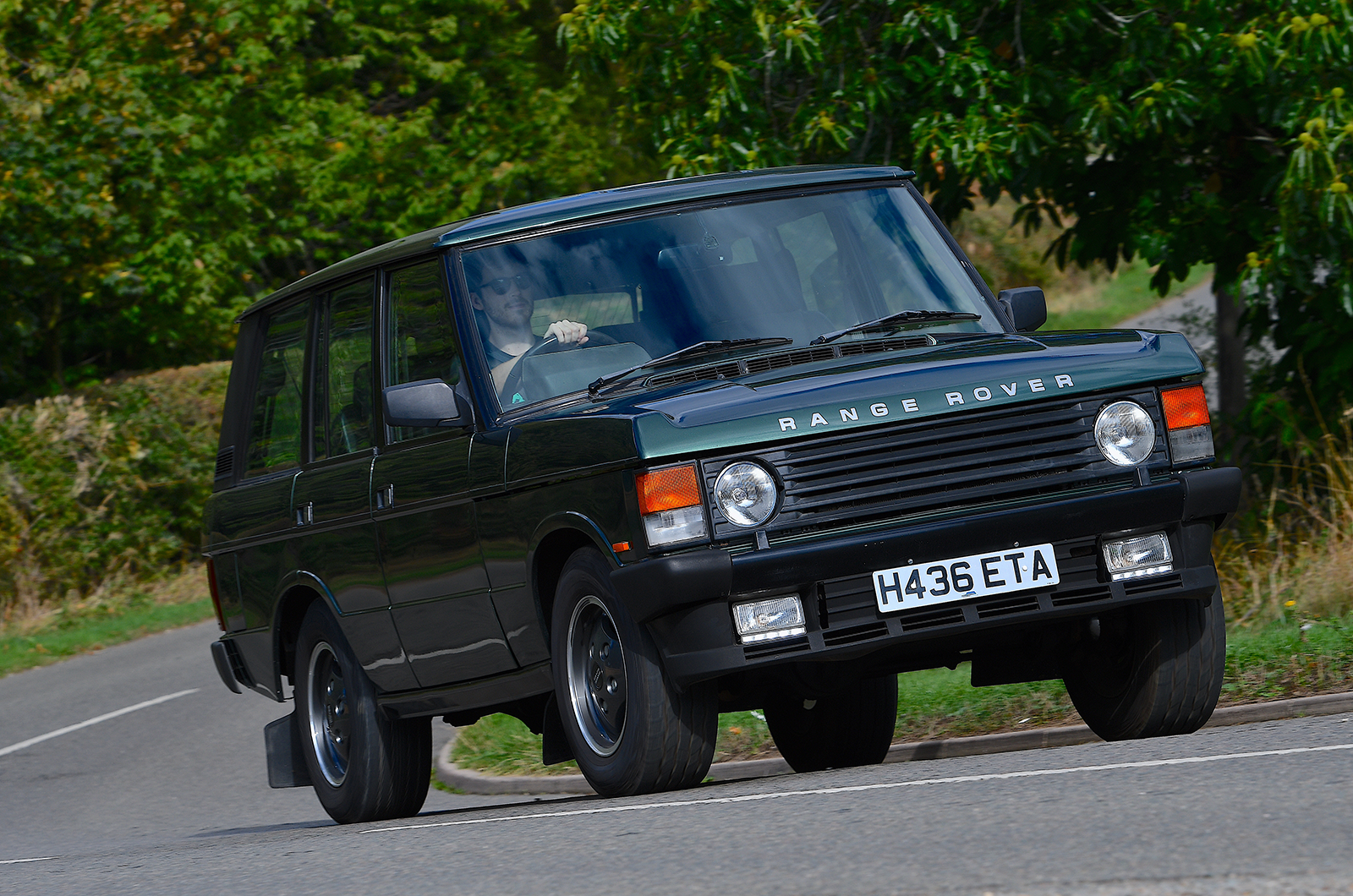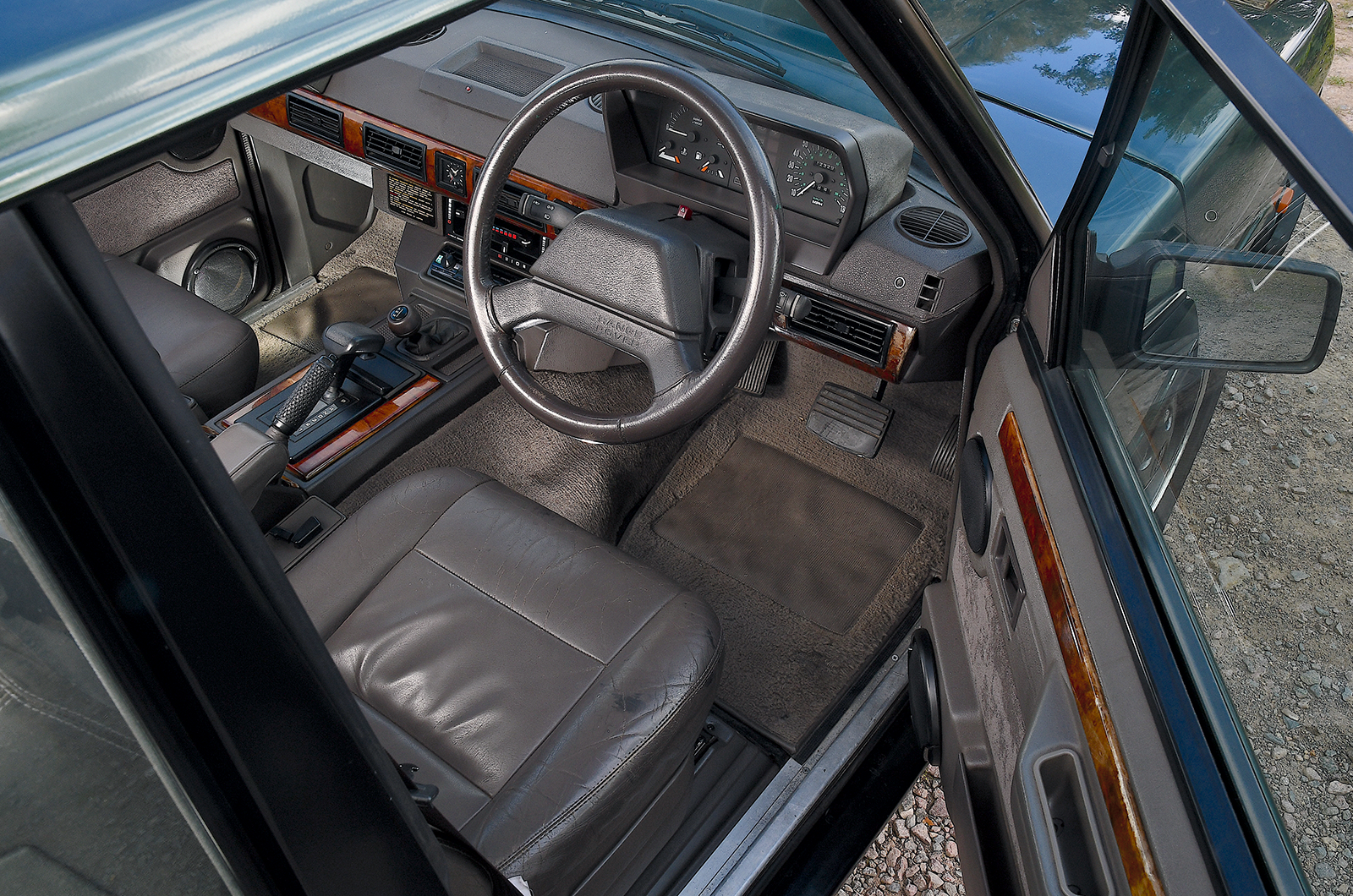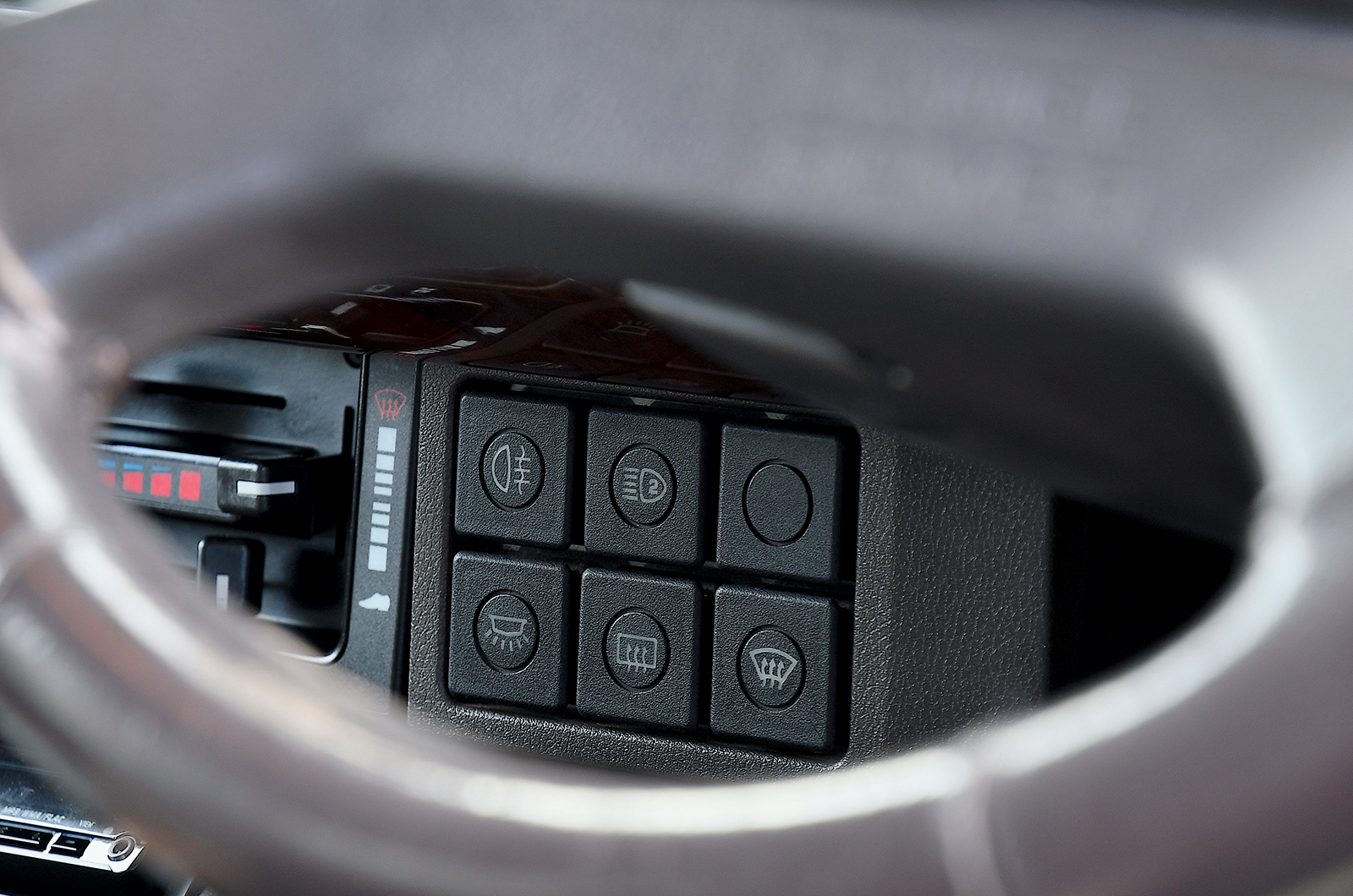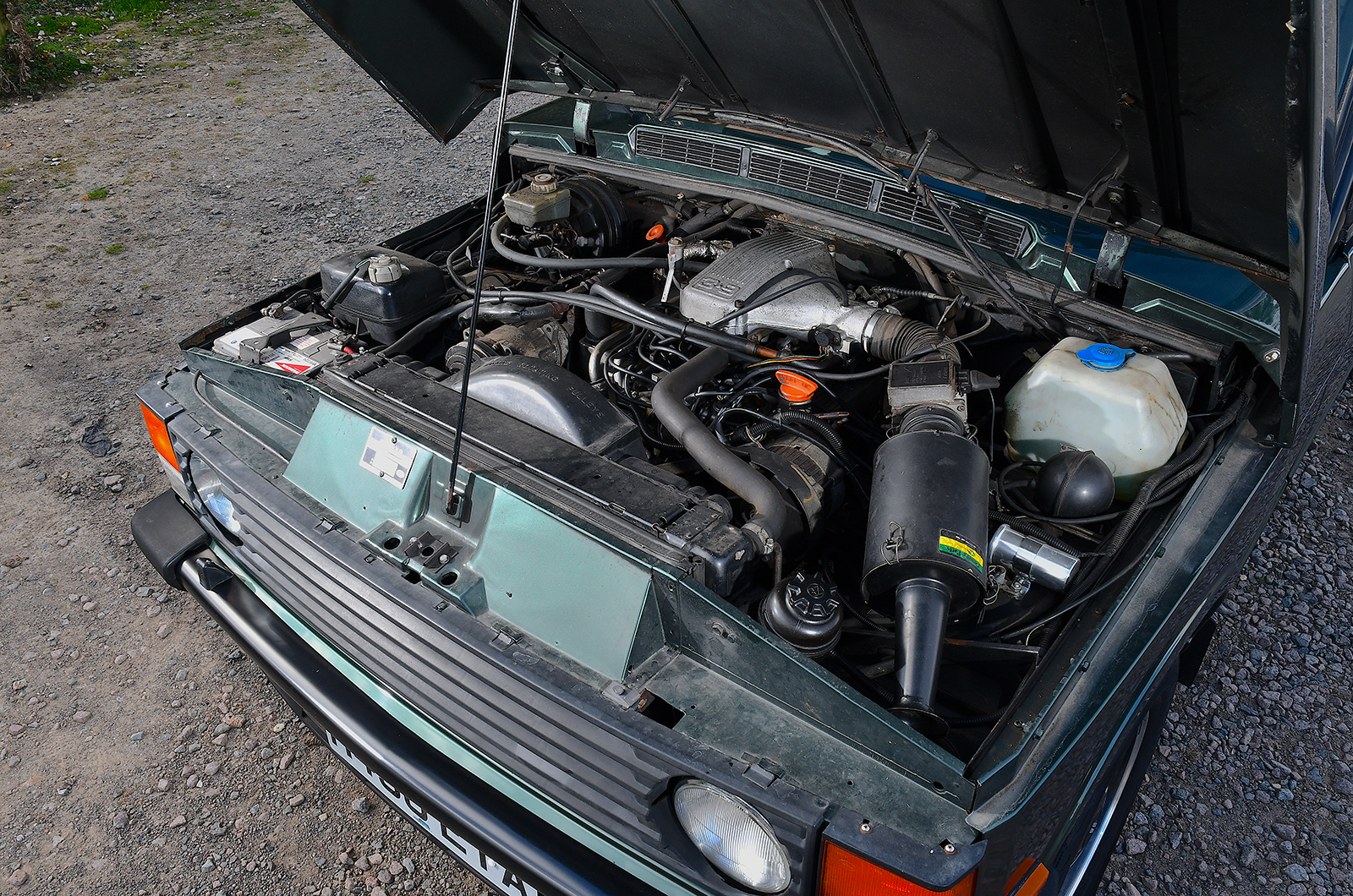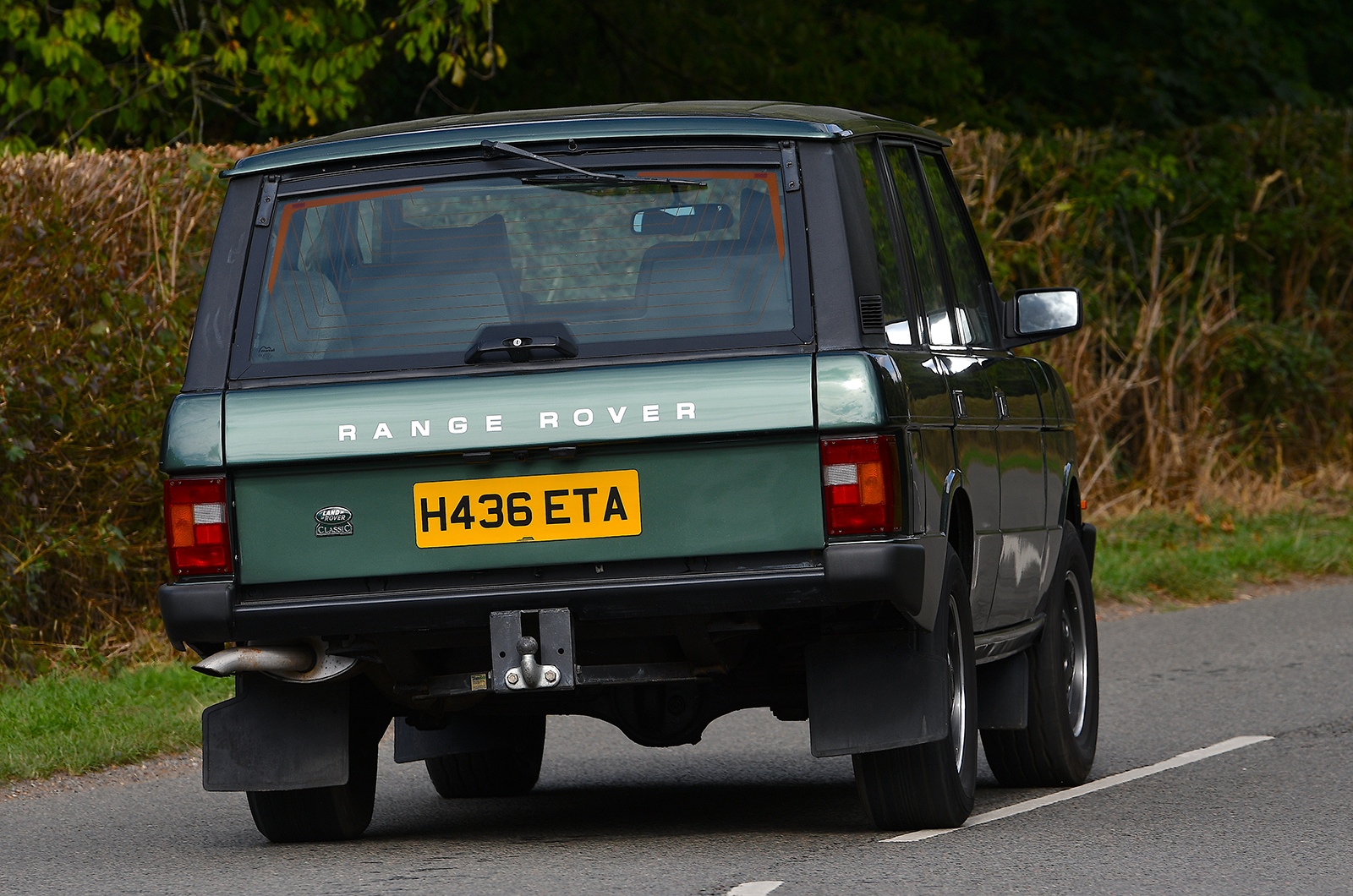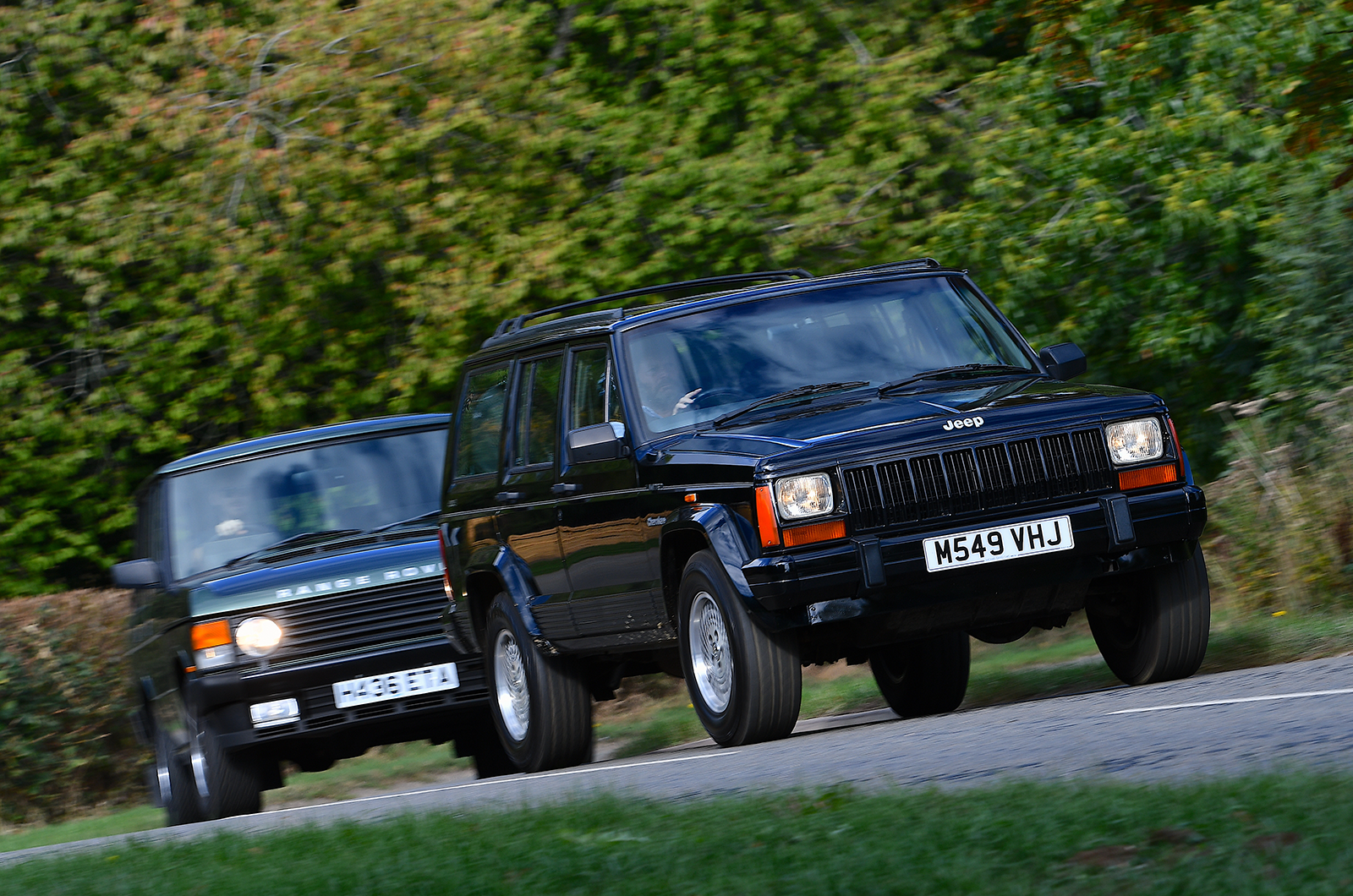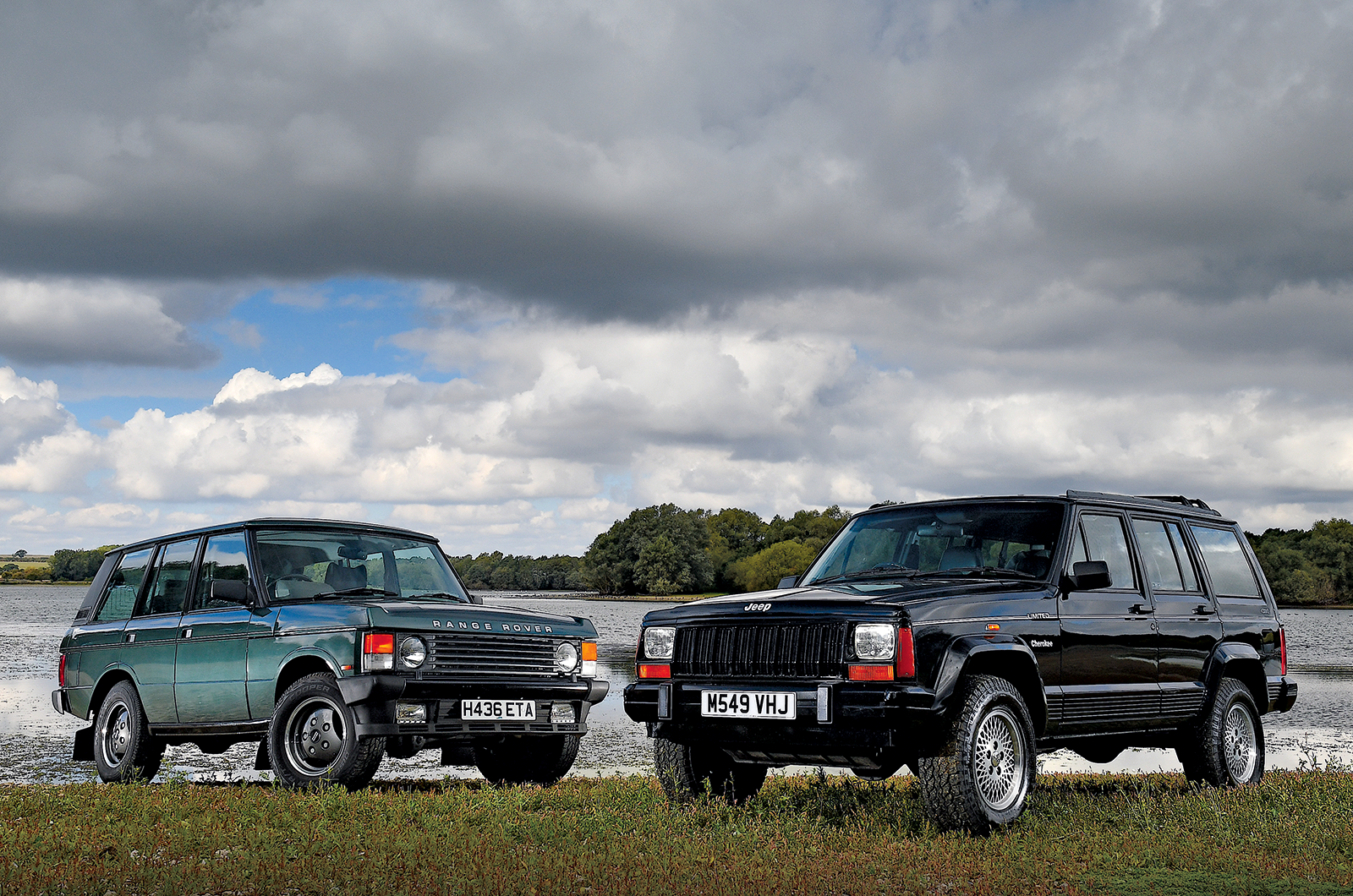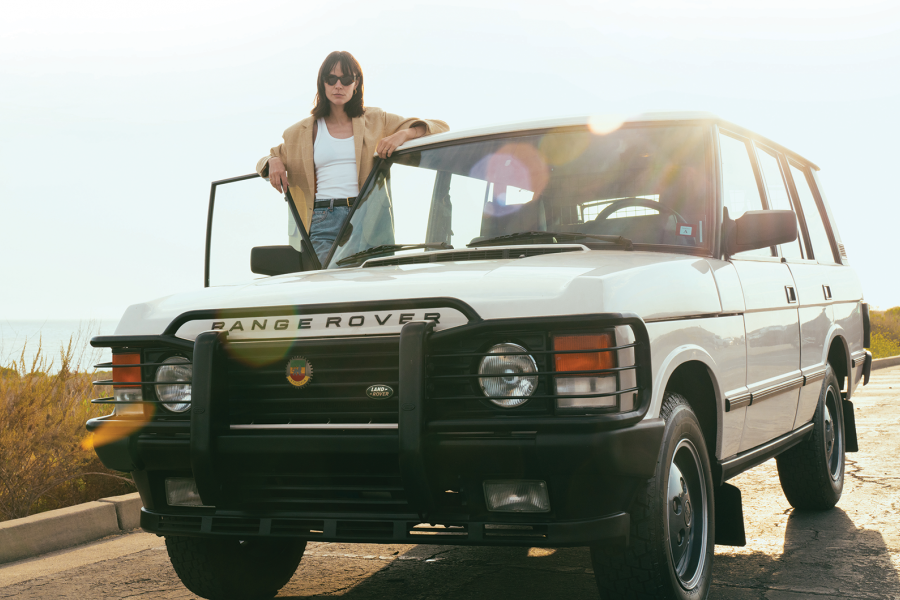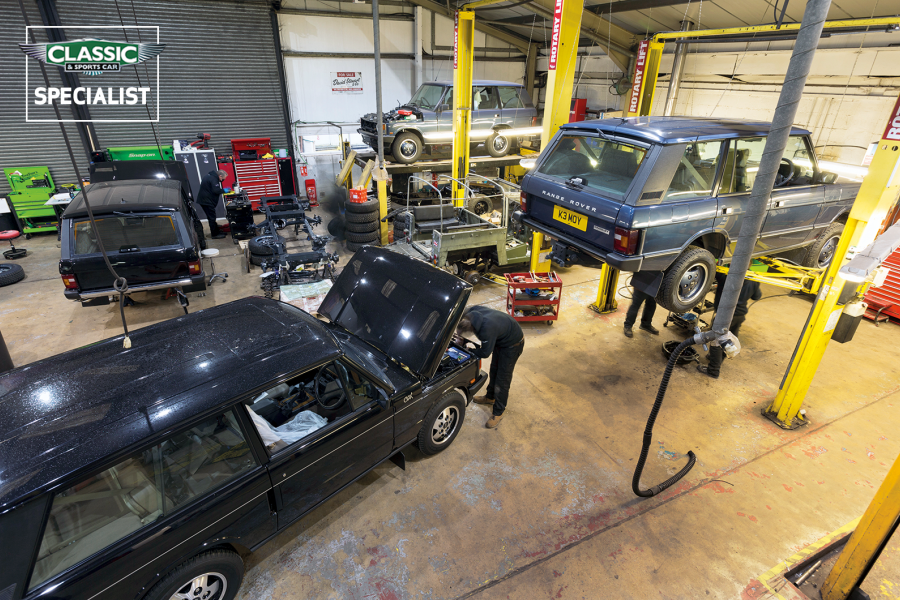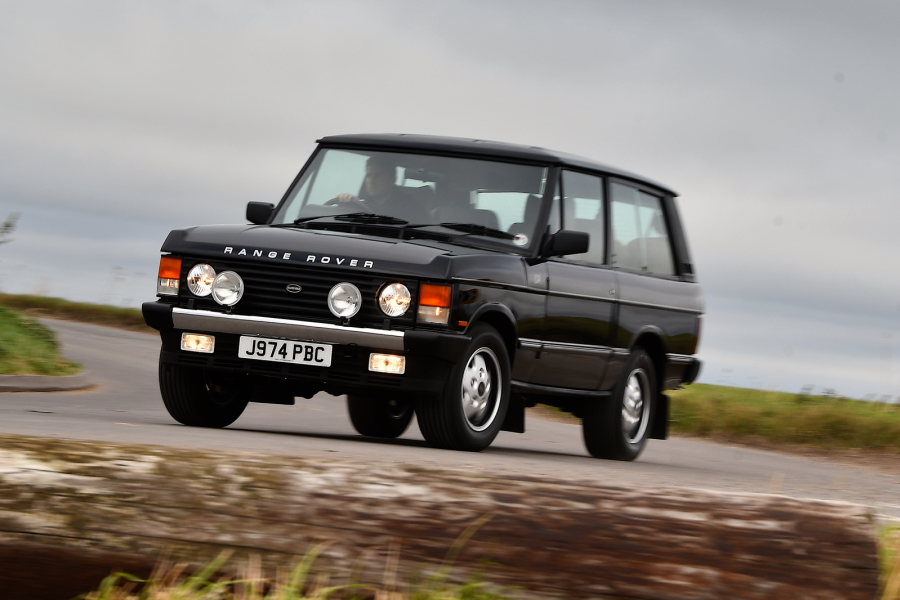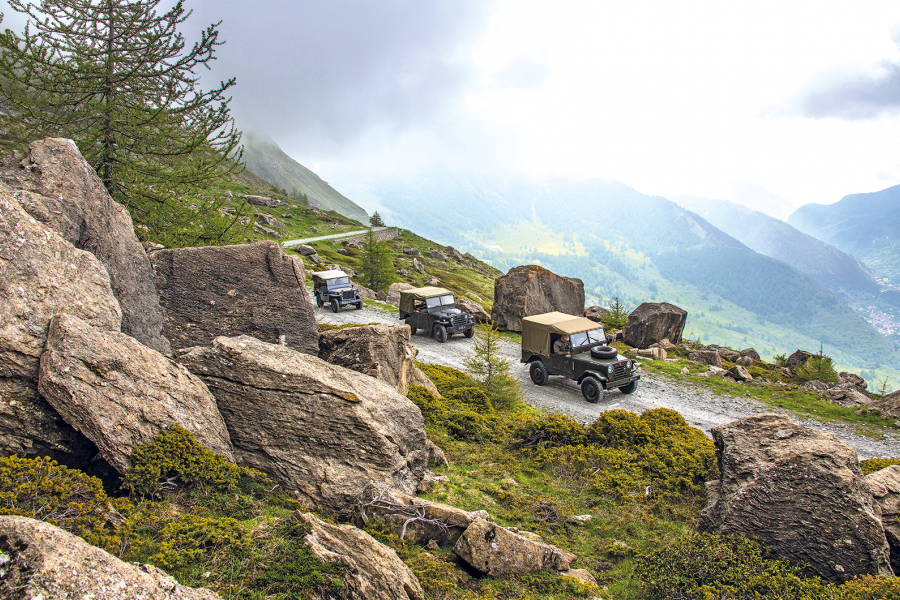Following the Jeep’s arrival the Range Rover quickly moved further upmarket, a signal that Land-Rover had no ambition to fight the Americans on price – at least not with its range-topping model.
Few enthusiasts will begrudge the British car for its lack of cruise control, but there’s no escaping the baffling design of the dashboard.
That high floor and low window line combine to squeeze the fascia, leaving little room for the controls and meaning that buttons are hidden behind the wheel, with unmarked switches in strange places and a cramped letterbox of a heater control that presumably makes intuitive sense only to the person who designed it.
‘Every time you find yourself railing against the Range Rover, it does something to remind you what a special driving experience it offers’
Its 1970s roots are clear in just how similar the cabin is to the Rover SD1, both in appearance and feeling less robust than the Jeep’s.
Every time you find yourself railing against the Range Rover, however, it does something to remind you just what a special driving experience it offers.
With that lack of air conditioning (and with the heater controls still bamboozling), it soon begins to get warm so it’s all windows down. And how. That huge glass area means that it’s only one step removed from a convertible once they’re open.
Designer David Bache’s simple interior gradually added more luxury, with leather trim and an automatic transmission arriving in ’84
The breeze howls through the cabin, putting the driver in mind of an open-sided Safari vehicle.
With the smooth V8 burbling beneath you, the suspension gliding over the road and the elevated driving position giving that distinctive sensation of command, the Range Rover suddenly makes sense.
Most drivers won’t worry too much about handling, have just a vague sense of performance and judge a car only by how it makes them feel. The Rangie offers a feeling unlike anything else.
The combination of high floor and low window leaves little space for buttons on the cramped dashboard
But there’s no getting away from the fact that, for a keen driver, the Cherokee is the much better car in all objective measures except for outright off-road ability.
It’s easy to ignore the Jeep by taking a ‘go hard or go home’ approach – which means picking the best off-roader at going off-road, or not bothering at all.
But that kind of binary logic that would surely make the Caterham Seven the only sports car, and even the Range Rover would be ditched in favour of a Land-Rover Defender or Toyota Land Cruiser.
The Buick-derived all-alloy V8 grew to 3.9 litres with electronic fuel injection in the Range Rover, supplying plenty of lazy grunt
As much as we Brits like to think of the Range Rover as a world-beater, the XJ Cherokee was a more innovative car with arguably even greater significance in the course of automotive development.
The monocoque XJ was a huge leap forward in the confluence between passenger cars and 4x4s, the progenitor of the first SUV boom of the 1990s.
The Range Rover only refined what the Wagoneer was already doing, and brought it to Blighty.
No wonder nearly nine Cherokees were built for every one Range Rover, over a shorter lifespan.
Although better off road, the Range Rover is trumped by the Jeep on smooth Tarmac
So perhaps it’s time the Cherokee got more recognition. This is a car that does a bit of everything: sportiness, luxury, everyday utility and off-road ability.
Had it been on sale in the UK earlier, allowing even greater numbers to be sold, it would surely now have the same nostalgic appeal it enjoys in the USA, and in which the Range Rover basks.
That said, while familiarity and patriotism have given the Brit an inflated reputation, it is impossible to deny the car has a certain x-factor.
These classic prestige off-roaders both have a strong following today
At times it seems almost unnecessary in its excess, with depths of off-road talent most drivers will never delve into, but such profligate ability, in the face of practicality or rational benefit, only adds to its sense of luxury.
It remains a unique driving experience, and one to savour.
Images: John Bradshaw
Thanks to: Michael David Cars for the Cherokee and Kingsley Cars for the Range Rover
Factfiles
Jeep Cherokee 4.0 Limited
- Sold/number built 1984-2001/2,884,172
- Construction steel unitary
- Engine all-iron, ohv 3958cc straight-six, with electronic fuel injection
- Max power 190bhp @ 4600rpm
- Max torque 225lb ft @ 3000rpm
- Transmission four-speed automatic, 4WD
- Suspension: front coil springs, leading arms, track bar rear leaf springs; live axles, telescopic dampers, anti-roll bar f/r
- Steering power-assisted recirculating ball
- Brakes discs front, drums rear, with servo and anti-lock
- Length 13ft 11½in (4255mm)
- Width 5ft 8in (1725mm)
- Height 5ft 4in (1626mm)
- Wheelbase 8ft 5½in (2575mm)
- Weight 3349Ib (1519kg)
- 0-60mph 9.8 secs
- Top speed 108mph
- Mpg 15-25
- Price new £18,995 (1993)
- Price now £5-20,000*
Range Rover 3.9 SE
- Sold/number built 1970-’96/326,070
- Construction steel chassis, steel and aluminium body
- Engine all-alloy, ohv 3947cc V8, with electronic fuel injection
- Max power 185bhp @ 4750rpm
- Max torque 235lb ft @ 2600rpm
- Transmission four-speed automatic, 4WD
- Suspension: front Panhard rod rear upper A-frame; live axles, radius arms, coil springs, telescopic dampers f/r
- Steering power-assisted recirculating ball
- Brakes discs, with servo and anti-lock
- Length 14ft 8in (4470mm)
- Width 5ft 7½in (1718mm)
- Height 5ft 10in (1778mm)
- Wheelbase 8ft 4in (2540mm)
- Weight 4383Ib (1988kg)
- 0-60mph 11.3 secs
- Top speed 110mph
- Mpg 15-20
- Price new £27,839 (1993)
- Price now £10-40,000*
*Prices correct at date of original publication
Enjoy more of the world’s best classic car content every month when you subscribe to C&SC – get our latest deals here
READ MORE
Estates of mind: Triumph PI Estate vs Range Rover
Future classic: Jeep Wrangler
Flat-out in a unique rally Range Rover
Charlie Calderwood
Charlie Calderwood is Classic & Sports Car’s Features Editor
